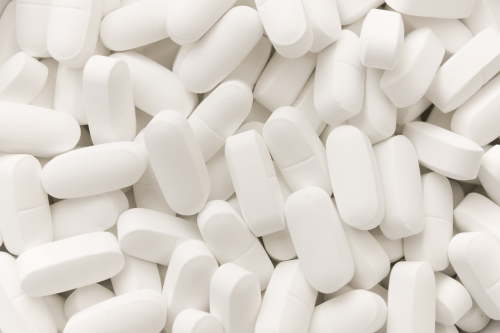M367 Pills: What is the Hydrocodone-Acetaminophen M367 White Oval Pill? | What You Need to Know
The prescription drug landscape is vast, and among the many medications available, M367 pills stand out as a widely prescribed option to manage pain, particularly moderate to severe pain. These pills, easily recognized by their white, oval shape and imprint, combine hydrocodone bitartrate and acetaminophen to create a powerful pain reliever that, while effective, comes with its own set of risks and complications. In this comprehensive guide, we’ll delve into what M367 pills are, how they work, their potential risks, and the importance of addiction treatment for those struggling with dependence on this medication.
What are M367 Pills (Hydrocodone Bitartrate)?
M367 pills are a prescription medication containing two key ingredients: hydrocodone bitartrate (10 mg) and acetaminophen (325 mg). Hydrocodone is an opioid analgesic, a class of drugs known for their effectiveness in relieving pain by acting on opioid receptors in the brain and spinal cord. Acetaminophen, on the other hand, is a less potent pain reliever but works synergistically with hydrocodone to enhance pain relief and reduce inflammation. Together, these ingredients create a potent solution for people suffering from conditions that cause moderate or severe pain, such as post-surgical pain or chronic pain conditions.
Hydrocodone works by altering the brain’s perception of pain. When someone takes M367 pills, the hydrocodone component binds to opioid receptors in the central nervous system, effectively blocking pain signals from being transmitted to the brain. This mechanism of action is why opioids like hydrocodone are so effective for pain management. However, the same process that reduces pain can also create feelings of euphoria, which makes hydrocodone highly addictive for some individuals.
Acetaminophen, the second ingredient in M367 pills, is included not only to boost the pain-relieving effects of hydrocodone but also to reduce fever. While acetaminophen is generally considered safe when used as directed, excessive doses can lead to liver damage, a serious and potentially fatal condition. The combination of these two drugs in M367 pills provides powerful relief for those in pain, but it also increases the risk of misuse, overdose, and long-term health problems if not taken correctly.
Composition and Medical Use
The M367 pill is a combination medication that contains hydrocodone bitartrate and acetaminophen. Hydrocodone bitartrate is an opioid analgesic that works by binding to opioid receptors in the brain, spinal cord, and other areas of the body, effectively blocking pain signals from reaching the brain. This action makes it highly effective in treating severe pain. Acetaminophen, a non-opioid pain reliever and fever reducer, enhances the effect of hydrocodone and helps bring down fever. Together, these ingredients create a powerful solution for managing moderate to severe pain.
Doctors commonly prescribe the M367 pill to treat pain associated with injuries or post-surgical procedures. It is also used to manage chronic pain conditions such as arthritis, fibromyalgia, and neuropathic pain. The medication is available in various strengths, including 10mg of hydrocodone bitartrate and 325mg of acetaminophen, making it a versatile option for pain relief. By combining these two components, the M367 pill provides effective pain management while also addressing inflammation and fever.

The Role of M367 Pills in Pain Management
Doctors often prescribe M367 pills to patients who need relief from moderate to severe pain, particularly when other pain medications, such as over-the-counter options like ibuprofen or acetaminophen alone, aren’t strong enough. For individuals dealing with chronic pain conditions, such as arthritis, back injuries, or postoperative recovery, M367 pills can provide much-needed relief and help them regain their quality of life.
However, the relief provided by M367 pills comes at a cost. The opioid drugs within these pills are powerful and habit-forming, which means that long-term use can lead to the development of physical dependence. This happens when the body becomes accustomed to the presence of hydrocodone and requires more of the drug to achieve the same level of pain relief, a phenomenon known as tolerance. As a result, patients may find themselves needing higher and higher doses of the medication to manage their pain, increasing the risk of overdose and other serious complications. The potential for drug abuse is significant, particularly for individuals with a history of substance abuse, making it crucial to monitor patients closely.
Patients using M367 pills must remain under close medical supervision to ensure that they do not exceed the prescribed dosage and to monitor for signs of physical dependence or addiction. Doctors may adjust the dosage based on the patient’s response to the medication, ensuring they receive adequate pain relief while minimizing the risk of dependence or adverse reactions.
Understanding the Risks of M367 Pills: Dose Related Respiratory Depression
While M367 pills are effective at relieving pain, they also come with significant risks. The primary danger associated with hydrocodone is its potential for abuse and addiction. Opioid addiction is a major public health crisis, with thousands of individuals developing opioid use disorder each year as a result of prescription opioids like hydrocodone.
One of the most dangerous side effects of hydrocodone is respiratory depression, a condition where breathing becomes shallow or stops altogether. Dose-related respiratory depression occurs when the body’s respiratory system slows down too much due to the effects of hydrocodone, especially at higher doses. This is particularly concerning when hydrocodone is taken alongside other central nervous system depressants, such as alcohol, benzodiazepines, or sleep medications, which can amplify the depressant effects and increase the likelihood of overdose. Patients are strongly advised to avoid combining M367 pills with these substances to prevent life-threatening complications.
Another major risk associated with M367 pills is liver damage. As previously mentioned, the acetaminophen component of these pills can cause severe liver injury if taken in large amounts. Even taking slightly more than the recommended dose can result in acetaminophen overdose, leading to potentially fatal hepatic necrosis. Individuals with pre-existing liver conditions or those who consume alcohol regularly are at an even higher risk of developing serious health risks related to acetaminophen overuse.

Addiction and Dependency on M367 Pills
The addictive potential of M367 pills cannot be overstated. Opioid drugs like hydrocodone are highly addictive because they produce not only pain relief but also a sense of euphoria. Over time, individuals may begin to misuse the drug by taking larger doses than prescribed or using it more frequently than recommended. This behavior can quickly lead to opioid addiction, a condition that requires addiction treatment to overcome.
Withdrawal symptoms are another hallmark of opioid addiction. When individuals who are dependent on M367 pills attempt to stop taking the medication, they may experience intense discomfort, including muscle aches, anxiety, nausea, and shallow breathing. These symptoms can make it difficult for individuals to quit on their own, often leading them back to the drug to relieve the discomfort. Because of the powerful withdrawal effects, medical detox is often recommended as the first step in recovery from opioid addiction.
Opioid Overdose and Seeking Help
One of the most alarming consequences of M367 pill misuse is the potential for opioid overdose. Overdose occurs when an individual takes too much hydrocodone, either intentionally or accidentally, causing a dangerous slowdown of the body’s vital functions, including breathing and heart rate. Signs of an overdose include shallow breathing, extreme drowsiness, and unresponsiveness. In such cases, immediate medical attention is crucial to prevent fatal outcomes. Calling emergency services or a regional poison control center is vital in these situations.
If you or a loved one is struggling with M367 pill addiction or have experienced an overdose, it’s important to seek help from a healthcare provider who specializes in addiction treatment. Treatment options can include inpatient rehab, outpatient treatment, and group therapy. These programs are designed to help individuals safely detox from the drug, develop healthy coping mechanisms, and address any underlying mental health disorders that may be contributing to the addiction.

Addiction Treatment and Recovery from M367 Pills
For individuals grappling with M367 pill addiction, seeking professional help is critical. Medical detox is often the first step in the recovery process, helping individuals manage the painful and often dangerous withdrawal symptoms that occur when they stop taking the drug. During detox, patients are monitored by medical professionals who can provide support and medication to ease the symptoms and ensure that the detox process is as safe and comfortable as possible.
Once detox is complete, long-term recovery requires ongoing support. Outpatient treatment and inpatient rehab programs offer therapy, education, and the development of healthy coping mechanisms to help individuals avoid relapse. At Revival Mental Health, we provide a comprehensive approach to addiction treatment, focusing not only on detox but also on addressing the underlying factors that contribute to addiction, such as mental health issues like anxiety, depression, or bipolar disorder.
Recovery from M367 pill addiction is a lifelong journey that requires dedication and support. Medication-assisted treatment (MAT) may be used in some cases to help individuals manage cravings and reduce the risk of relapse. MAT involves the use of medications like methadone or buprenorphine, which can help stabilize individuals as they navigate the early stages of recovery. In addition to MAT, group therapy and individual counseling play a critical role in helping individuals address the emotional and psychological aspects of their addiction.
Therapy for Addiction Treatment
Therapy is an essential component of addiction treatment and recovery. Various therapeutic approaches, such as cognitive behavioral therapy (CBT), dialectical behavior therapy (DBT), motivational interviewing, group therapy, and individual therapy, have proven effective in treating opioid addiction.
CBT aims to identify and change negative thoughts and behavior patterns that contribute to addiction. It helps individuals develop healthier ways of thinking and coping with stress. DBT focuses on building distress tolerance, emotion regulation, mindfulness, and interpersonal effectiveness, providing individuals with tools to manage their emotions and relationships more effectively. Motivational interviewing is a conversational approach that helps individuals build intrinsic motivation for change, encouraging them to take active steps toward recovery.
Group therapy allows people to connect with others going through similar struggles, providing mutual support and accountability on the path to recovery. It fosters a sense of community and shared experience, which can be incredibly empowering. Individual therapy offers a safe space to process emotions, gain insights, and develop healthy coping mechanisms tailored to each person’s unique situation. Together, these therapeutic approaches form a comprehensive strategy for addiction treatment, addressing both the psychological and emotional aspects of opioid addiction.

Aftercare and Maintaining Sobriety
After completing addiction treatment, the journey is not over. Maintaining sobriety and preventing relapse over the long term requires dedication and continued effort through aftercare and lifestyle changes. Support groups, developing new habits, and ongoing therapy are essential components of aftercare.
Support groups like Narcotics Anonymous, SMART Recovery, and others offer peer support and healthy social connections. These groups provide a platform for individuals to share their experiences, challenges, and successes, fostering a sense of community and mutual support. Having a sponsor who has been through recovery can also provide invaluable guidance and encouragement, helping individuals navigate the ups and downs of maintaining sobriety.
Developing new habits, such as engaging in regular exercise, exploring creative outlets like art and music, and participating in volunteer work, can stimulate the release of dopamine and endorphins, helping to manage cravings and maintain sobriety. These activities not only provide a healthy distraction but also contribute to overall well-being and a sense of purpose.
Ongoing therapy is crucial in aftercare, providing a safe space to process emotions, gain insights, and develop healthy coping mechanisms. Regular therapy sessions can help individuals address any lingering issues, manage stress, and stay focused on their recovery goals. By incorporating these elements into their daily lives, individuals can build a strong foundation for long-term sobriety and a healthier, more fulfilling future.
Safe Handling and Administration
Users should only take M367 medication if it is prescribed by their physician and obtained from an accredited pharmacy. It is crucial to follow the doctor’s instructions carefully and not to take M367 pills or in crushed form obtained from the street. Only take the medication as directed by your doctor, and do not increase the dose or take your next dose before the prescribed time. If you develop a dependency, alert your doctor immediately.
It is essential to store M367 pills in a cool, dry place, out of reach of children and pets, to prevent accidental ingestion. Dispose of M367 pills responsibly, following guidelines provided by your healthcare provider or local disposal programs. Inform your doctor about any other medications, supplements, or herbal remedies you are taking to avoid potential interactions. Avoid drinking alcohol while taking M367, as it can increase the risk of severe side effects. Be cautious when operating machinery or driving, as the medication can impair your ability to perform these tasks safely.
Do not crush, chew, or break the pill, as this can release the drug all at once, increasing the risk of overdose. Inform your doctor if you have a history of substance abuse, respiratory problems, liver or kidney disease, or any other medical conditions. By following these guidelines, you can use M367 pills safely and effectively to manage your pain while minimizing the risk of adverse effects.
Conclusion: M367 Pills and the Path to Recovery
M367 pills, while effective for managing pain, come with significant risks that cannot be ignored. From physical dependence to opioid addiction, the dangers of hydrocodone-acetaminophen pills are real and should be taken seriously. For those struggling with addiction, help is available. Revival Mental Health offers comprehensive addiction treatment programs designed to help individuals overcome their dependence on prescription opioids like M367.
By seeking professional help, individuals can break free from the cycle of addiction and achieve lasting recovery. With the right combination of medical detox, therapy, and ongoing support, it is possible to regain control of your life and build a healthier, drug-free future. If you or a loved one is struggling with M367 pill addiction, don’t wait—reach out to Revival Mental Health today to start your journey toward recovery.





